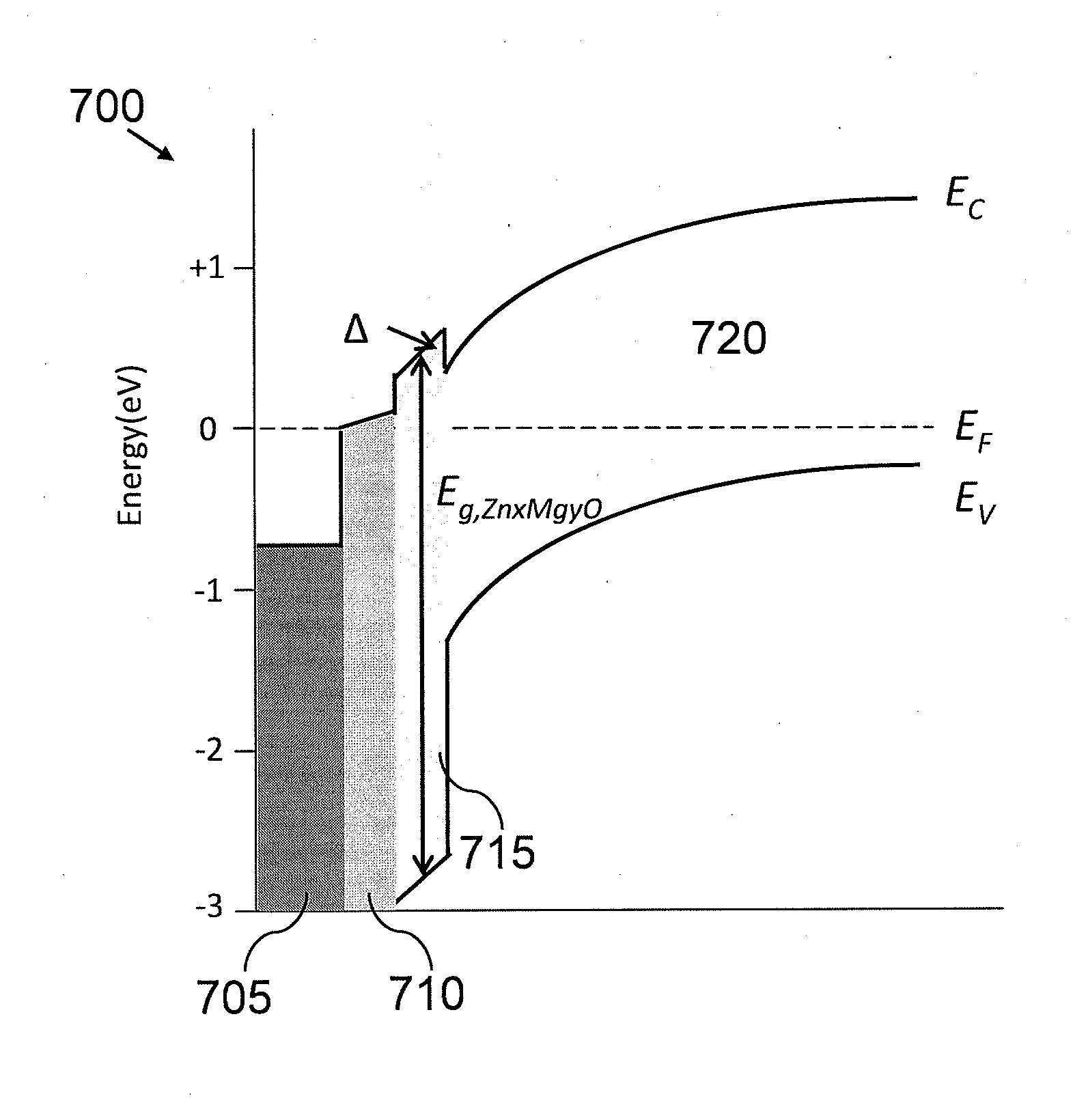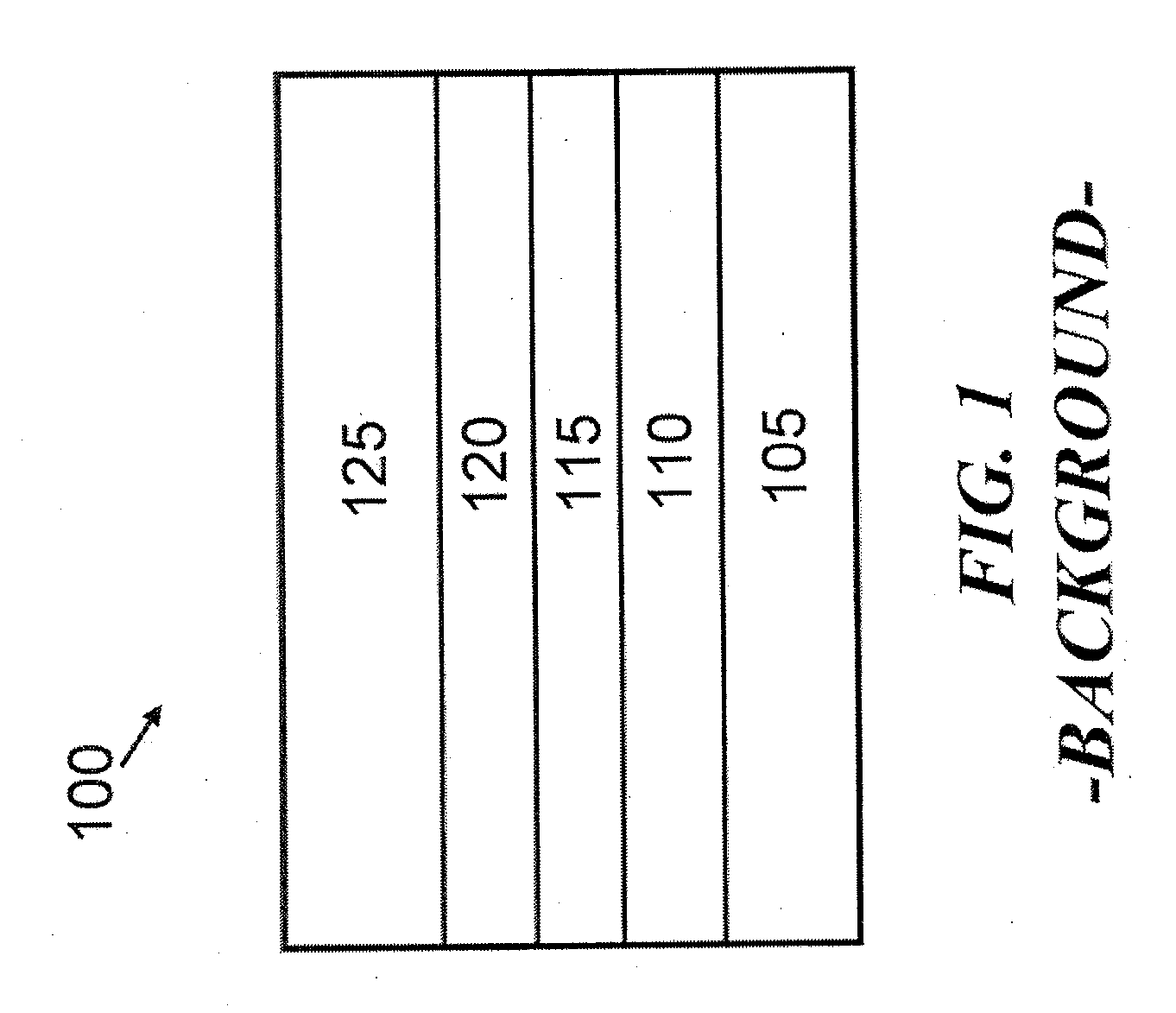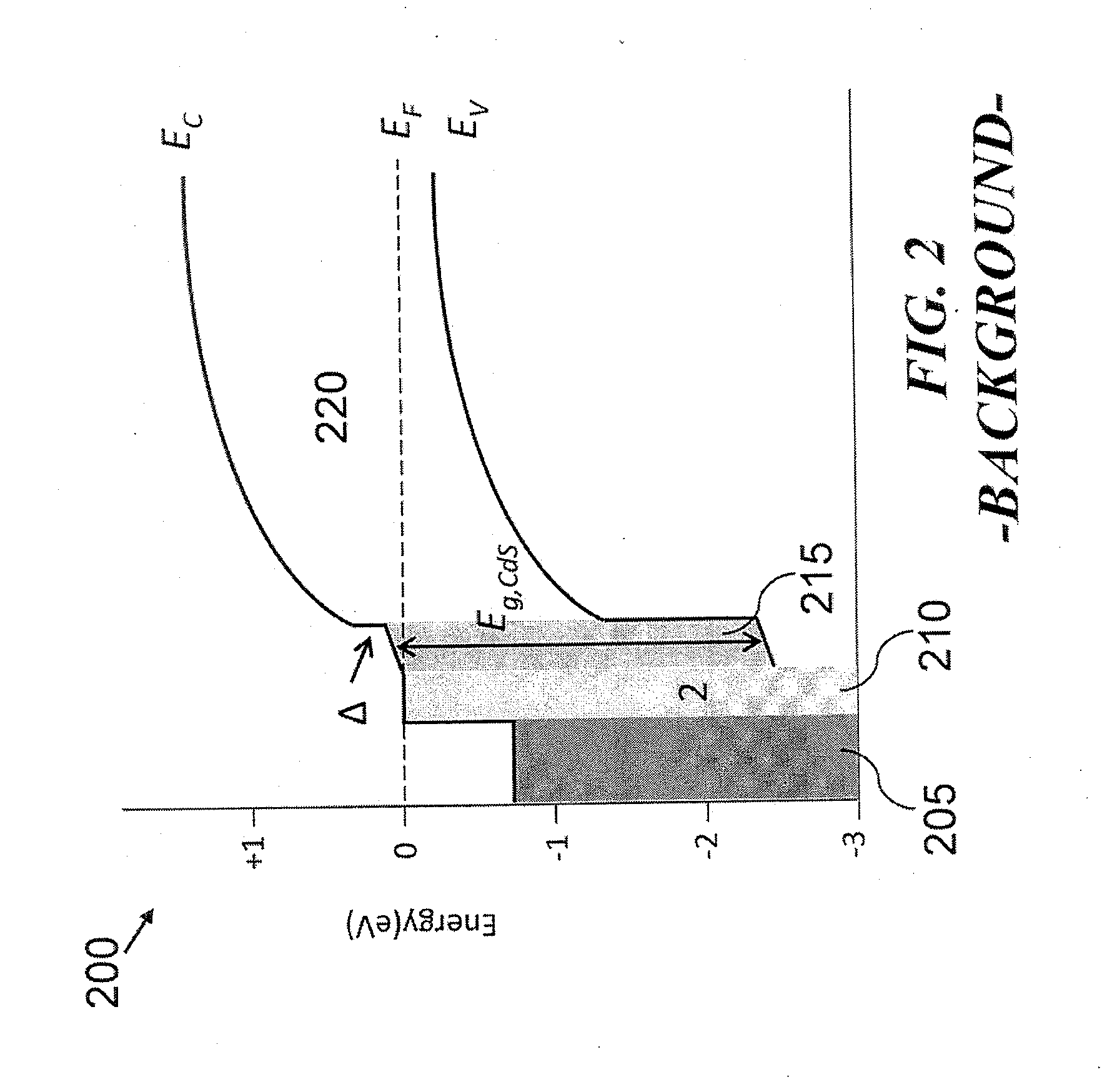Photovoltaic device with a zinc magnesium oxide window layer
a photovoltaic and window layer technology, applied in the field of semiconductor devices, can solve the problems of large loss in voc and
- Summary
- Abstract
- Description
- Claims
- Application Information
AI Technical Summary
Problems solved by technology
Method used
Image
Examples
Embodiment Construction
[0018]This disclosure is directed to photovoltaic devices and methods of production. In one embodiment, Zn1−xMgxO is employed for a window layer of substrate structure. FIG. 3 depicts substrate structure 300 according to one embodiment. Substrate structure 300 includes substrate 305, transparent conductive oxide (TCO) layer 310, buffer layer 315 and window layer 320. TCO layer 310 may typically be employed to allow solar radiation to enter a photovoltaic device and may further act as an electrode. TCO layer 310 may include an n-type material doped with one of SnO2 and Cd2SnO4. Window layer 320 may be employed to mitigate the internal loss of photo carriers (e.g., electrons and holes) in the device and may strongly influence device parameters including open circuit voltage (Voc), short circuit current (Isc) and fill factor (FF). In one embodiment, window layer 320 may allow incident light to pass to an absorber material to absorb light. According to one embodiment, to improve overall...
PUM
 Login to View More
Login to View More Abstract
Description
Claims
Application Information
 Login to View More
Login to View More - R&D
- Intellectual Property
- Life Sciences
- Materials
- Tech Scout
- Unparalleled Data Quality
- Higher Quality Content
- 60% Fewer Hallucinations
Browse by: Latest US Patents, China's latest patents, Technical Efficacy Thesaurus, Application Domain, Technology Topic, Popular Technical Reports.
© 2025 PatSnap. All rights reserved.Legal|Privacy policy|Modern Slavery Act Transparency Statement|Sitemap|About US| Contact US: help@patsnap.com



